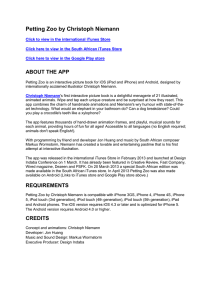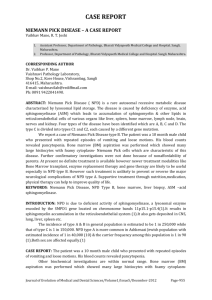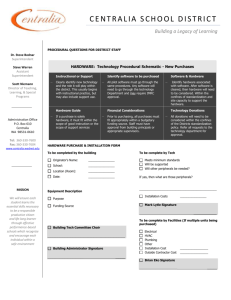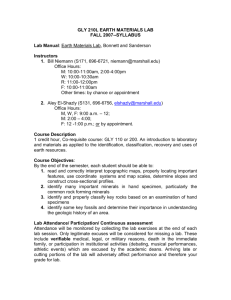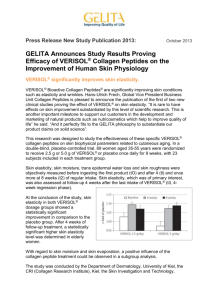Niemann–Pick-disease
advertisement
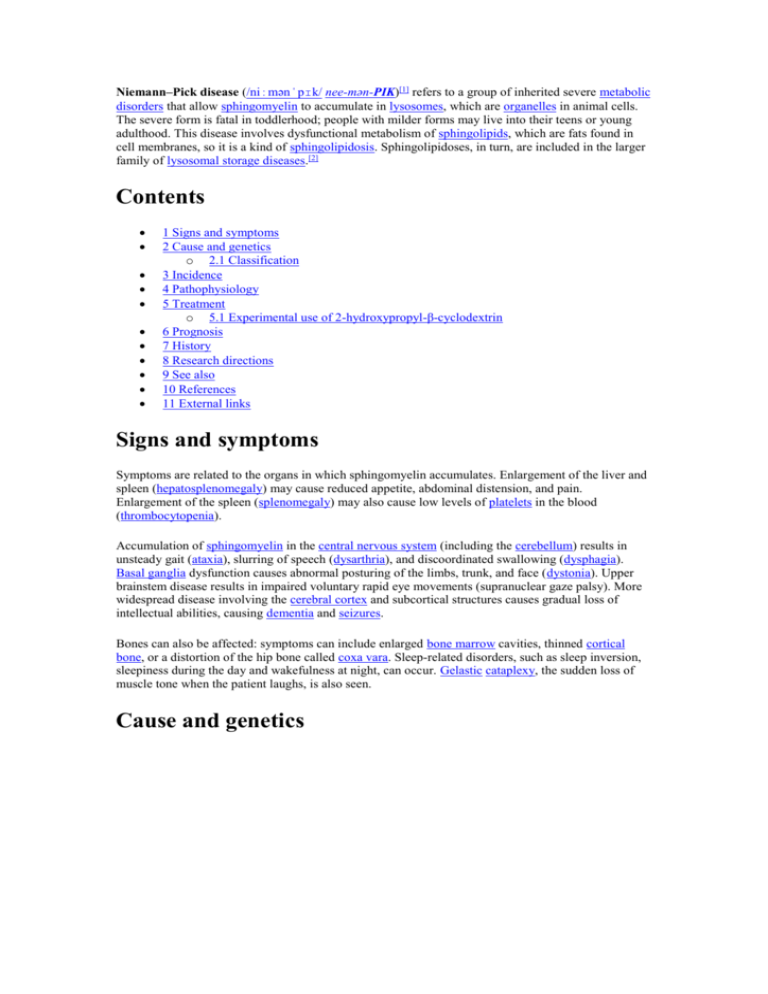
Niemann–Pick disease (/niːmənˈpɪk/ nee-mən-PIK)[1] refers to a group of inherited severe metabolic disorders that allow sphingomyelin to accumulate in lysosomes, which are organelles in animal cells. The severe form is fatal in toddlerhood; people with milder forms may live into their teens or young adulthood. This disease involves dysfunctional metabolism of sphingolipids, which are fats found in cell membranes, so it is a kind of sphingolipidosis. Sphingolipidoses, in turn, are included in the larger family of lysosomal storage diseases.[2] Contents 1 Signs and symptoms 2 Cause and genetics o 2.1 Classification 3 Incidence 4 Pathophysiology 5 Treatment o 5.1 Experimental use of 2-hydroxypropyl-β-cyclodextrin 6 Prognosis 7 History 8 Research directions 9 See also 10 References 11 External links Signs and symptoms Symptoms are related to the organs in which sphingomyelin accumulates. Enlargement of the liver and spleen (hepatosplenomegaly) may cause reduced appetite, abdominal distension, and pain. Enlargement of the spleen (splenomegaly) may also cause low levels of platelets in the blood (thrombocytopenia). Accumulation of sphingomyelin in the central nervous system (including the cerebellum) results in unsteady gait (ataxia), slurring of speech (dysarthria), and discoordinated swallowing (dysphagia). Basal ganglia dysfunction causes abnormal posturing of the limbs, trunk, and face (dystonia). Upper brainstem disease results in impaired voluntary rapid eye movements (supranuclear gaze palsy). More widespread disease involving the cerebral cortex and subcortical structures causes gradual loss of intellectual abilities, causing dementia and seizures. Bones can also be affected: symptoms can include enlarged bone marrow cavities, thinned cortical bone, or a distortion of the hip bone called coxa vara. Sleep-related disorders, such as sleep inversion, sleepiness during the day and wakefulness at night, can occur. Gelastic cataplexy, the sudden loss of muscle tone when the patient laughs, is also seen. Cause and genetics Niemann–Pick disease has an autosomal recessive pattern of inheritance. Mutations in the SMPD1 gene cause Niemann–Pick disease types A and B. They stop the body from making an enzyme, acid sphingomyelinase, that breaks down lipids. [3] Mutations in NPC1 or NPC2 cause Niemann–Pick disease, type C (NPC), which affects a protein used to transport lipids.[3] Type D was originally separated from type C to delineate a group of patients with otherwise identical disorders who shared a common Nova Scotian ancestry. Patients in this group are known to share a specific mutation in the NPC1 gene, so NPC is used for both groups. Before the molecular defects were described, the terms "Niemann–Pick type I" and "Niemann–Pick type II" were proposed to separate the high- and low-sphingomyelin forms of the disease in the early 1980s. Niemann–Pick disease is inherited in an autosomal recessive pattern, which means both copies, or alleles, of the gene must be defective to cause the disease. "Defective" means they are altered in a way that impairs their function. Most often, the parents of a child with an autosomal recessive disorder are carriers: they have one copy of the altered gene, but are not affected because the other copy produces the enzyme. If both parents are carriers, each pregnancy has a 25% chance of producing an affected child. Genetic counseling and genetic testing are recommended for families who may be carriers of Niemann–Pick. Classification Niemann–Pick disease, SMPD1-associated, which includes types A and B Niemann–Pick disease type A: classic infantile Niemann–Pick disease type B: visceral Niemann–Pick disease, type C: subacute/juvenile, includes types C1 (95% of type C) and C2. Type C is the most common form of the disease[3] Type C2 is a rare form of the disease.[4] Incidence The incidence among Ashkenazi Jews is estimated to be about one in 40,000 for type A of Niemann– Pick disease.[3] The incidence of both Niemann–Pick disease types A and B in all other populations is estimated to be one in 250,000.[3] The incidence of Niemann–Pick disease type C is estimated to be one in 150,000.[3] Pathophysiology Niemann–Pick diseases are a subgroup of lipid storage disorders called sphingolipidoses in which harmful quantities of fatty substances, or lipids, accumulate in the spleen, liver, lungs, bone marrow, and brain. In the classic infantile type-A variant, a missense mutation causes complete deficiency of sphingomyelinase. Sphingomyelin is a component of cell membrane including the organellar membrane, so the enzyme deficiency blocks degradation of lipid, resulting in the accumulation of sphingomyelin within lysosomes in the macrophage-monocyte phagocyte lineage. Affected cells become enlarged, sometimes up to 90 μm in diameter, secondary to the distention of lysosomes with sphingomyelin and cholesterol. Histology shows lipid-laden macrophages in the marrow and "sea-blue histiocytes" on pathology. Numerous small vacuoles of relatively uniform size are created, giving the cytoplasm a foamy appearance. Treatment No specific treatment is known for type A, but symptoms are treated. In adult patients with type B, doctors try to keep cholesterol levels down to normal levels. If statins are used, they monitor liver function. If the spleen is enlarged and platelet levels low, acute episodes of bleeding may require transfusions of blood products. If they have symptoms of interstitial lung disease, they may need oxygen.[5] Anecdotally, organ transplant has been attempted with limited success. Future prospects include enzyme replacement and gene therapy. Bone marrow transplant has been tried for type B. [citation needed] In January 2009, Actelion announced the drug miglustat (Zavesca) had been approved in the European Union for the treatment of progressive neurological manifestations in adult patients and pediatric patients with NPC. The drug is available to patients in the United States on an experimental basis. In March 2010, the FDA requested additional preclinical and clinical information regarding Zavesca from Actelion before making a final decision on approving the drug in the United States for NPC. [6] Experimental use of 2-hydroxypropyl-β-cyclodextrin Researchers at the University of Texas Southwestern Medical Center found, when Niemann–Pick type C mice were injected with 2-hydroxypropyl-β-cyclodextrin (HPbCD) when they were 7 days old, marked improvement in liver function tests, much less neurodegeneration, and, ultimately, significant prolongation of life occurred. These results suggest HPbCD acutely reverses the storage defect seen in NPC.[7] In April 2009, the FDA approved investigational new drug (IND) applications for eight-year-old identical twins, Addison and Cassidy Hempel of Reno, Nevada, to receive intravenous infusions of HPbCD. The twins are the first in the United States to receive experimental treatment at Renown Regional Medical Center in Nevada. The twins received HPbCD, 2500 mg/kg, administered as an eight-hour infusion, twice weekly.[citation needed] In February 2010, the parents of the twins with the support of Children's Hospital Oakland, filed an orphan drug application with the Office of Orphan Product Development at the FDA for Trappsol brand HPbCD for the treatment of NPC. On May 17, 2010, the FDA granted HPbCD orphan drug status and designated it as a promising treatment for NPC. [citation needed] On July 14, 2010, Children's Hospital Oakland filed IND applications [8] with the FDA on behalf of the Hempel twins, based on promising new animal data. Doctors proposed to deliver hydroxy-propyl-betacyclodextrin intrathecally and directly into the central nervous system of the twins in an attempt to deliver the compound across the blood–brain barrier and arrest neurodegeneration. The drug was to be administered twice per month and dosing would start at 175 mg (1 mM) and would be increased steadily to reach 875 mg (5 mM) by day 60.[9] The INDs were approved on September 23, 2010, and bimonthly intrathecal injections of HPbCD into the spine were administered starting in October 2010. Additional filings have been made to the FDA by Children's Hospital Research Center Oakland requesting approval to surgically implant Medtronic SynchroMed pumps into the twins to deliver continuous doses of HPbCD into their brains.[10] In April 2011, the U.S. National Institutes of Health (NIH), in collaboration with the Therapeutics for Rare and Neglected Diseases Program (TRND),[11] announced they are developing a clinical trial using HPbCD for Niemann–Pick type C patients. The clinical trial is in the planning phase, not yet approved by the FDA.[12] On September 20, 2011, the European Medicines Agency granted HPbCD orphan drug status and designated the compound as a potential treatment for Niemann–Pick type C disease. Prognosis Type A Niemann–Pick disease (about 85% of cases)[13] has an extremely poor prognosis, with most cases being fatal by the age of 18 months.[14] Type B (adult onset) and type C (mutation affecting a different molecule) Niemann–Pick diseases have a better prognosis, with many patients with these disorders living into their teens or adulthood.[3] History Albert Niemann published the first description of what is now known as Niemann–Pick disease, type A, in 1914. Ludwig Pick described the pathology of the disease in a series of papers in the 1930s.[15][16][17] In 1961, the classification of Niemann–Pick disease into types A, B, and C was introduced, and also contained a type D,[18][19] also called the "Nova Scotian type". Genetic studies showed that type D is caused by the same gene as type C1, and the type D designation is no longer used today. [3] Research directions Loss of myelin in the central nervous system is considered to be a main pathogenic factor. Research uses animal models carrying the underlying mutation for Niemann–Pick disease, e.g. a mutation in the NPC1 gene as seen in Niemann-Pick type C disease. In this model, the expression of myelin gene regulatory factor (MRF) has been shown to be significantly decreased.[20] MRF is a transcription factor of critical importance in the development and maintenance of myelin sheaths.[21] A perturbation of oligodendrocyte maturation and the myelination process might, therefore, be an underlying mechanism of the neurological deficits.[20] In 2011, fibroblast cells derived from patients with Niemann-Pick type C1 disease were shown to be resistant to Ebola virus because of mutations in the NPC1 protein, which is needed for viral escape from the vesicular compartment.[22] See also Niemann–Pick disease, type C Gaucher's disease Medical genetics of Ashkenazi Jews References 1. 2. 3. 4. 5. 6. 7. 8. 9. 10. 11. 12. 13. 14. 15. 16. 17. 18. 19. "Niemann–Pick". Oxford English Dictionary (3rd ed.). Oxford University Press. September 2005. James, William D.; Berger, Timothy G.; et al. (2006). Andrews' Diseases of the Skin: clinical Dermatology. Saunders Elsevier. p. 536. ISBN 0-7216-2921-0. "Neimann-Pick Disease". Genetics Home Reference. NIH. January 2008. Retrieved 2 October 2012. "Background". "Sphingomyelinase Deficiency Treatment & Management". Medscape Reference: Drugs, Diseases & Procedures. 27 December 2012. Retrieved 22 June 2013. |first1= missing |last1= in Authors list (help) "Medical Care". "Sphingomyelinase Deficiency Treatment & Management". Medscape Reference: Drugs, Diseases & Procedures. 27 December 2012. Retrieved 22 June 2013. |first1= missing |last1= in Authors list (help) Actelion Press Release retrieved 10-31-2014 Liu, Benny; et al. (2009). "Reversal of defective lysosomal transport in NPC disease ameliorates liver dysfunction and neurodegeneration in the npc1−/− mouse". Proc. Natl. Acad. Sci. U.S.A. 106 (7): 2377–82. doi:10.1073/pnas.0810895106. Cited in Chemical & Engineering News, 9 February 2009 p. 9 "Investigational New Drug". U.S. Food and Drug Administration. Hastings, Caroline (13 August 2010). "Request for Intrathecal Delivery of HPBCD for Niemann Pick Type C Patients". Addi and Cassi blog. Children's Hospital and Research Center Oakland. Retrieved 22 June 2013. Hempel, Chris (23 September 2010). "FDA Approval Received!". Addi and Cassi blog. Retrieved 22 June 2013. "Therapeutics for Rare and Neglected Diseases Program". U.S. National Institutes of Health. Hempel, Chris (13 April 2011). "FDA Filing Made Requesting Use of Medtronic SynchroMed Pump To Deliver Cyclodextrin To Brain". Addi and Cassi blog. Retrieved 22 June 2013. "Dermatologic Manifestations of Niemann–Pick Disease". Medscape. 25 April 2011. |first1= missing |last1= in Authors list (help) niemann at NINDS synd/1029 at Who Named It? Niemann, A. (1914). "Ein unbekanntes Krankheitsbild". Jahrbuch für Kinderheilkunde. Neue Folge (Berlin) 79: 1–10. Pick, L. (1926). "Der Morbus Gaucher und die ihm ähnlichen Krankheiten (die lipoidzellige Splenohepatomegalie Typus Niemann und die diabetische Lipoidzellenhypoplasie der Milz)". Ergebnisse der Inneren Medizin und Kinderheilkunde (Berlin) 29: 519–627. Crocker AC (April 1961). "The cerebral defect in Tay–Sachs disease and Niemann–Pick disease". Journal of Neurochemistry 7: 69–80. doi:10.1111/j.1471-4159.1961.tb13499.x. PMID 13696518. Online 'Mendelian Inheritance in Man' (OMIM) Niemann–Pick Disease, Type C1; NPC1 257220 20. Yan, X.; Lukas, J.; Witt, M.; Wree, A.; Hubner, R.; Frech, M.; Kohling, R.; Rolfs, A.; Luo, J. (2011-09-23). "Decreased expression of myelin gene regulatory factor in Niemann-Pick type C 1 mouse". Metab Brain Dis 26 (4): 299–306. doi:10.1007/s11011-011-9263-9. PMID 21938520. 21. Koenning, Matthias; Jackson, Stacey; Hay, Curtis M.; Faux, Clare; Kilpatrick, Trevor J.; Willingham, Melanie; Emery, Ben (September 5, 2012). "Myelin Gene Regulatory Factor Is Required for Maintenance of Myelin and Mature Oligodendrocyte Identity in the Adult CNS". The Journal of Neuroscience 32 (36): 12528–12542. doi:10.1523/JNEUROSCI.1069-12.2012. PMID 22956843. 22. Carette JE, Raaben M, Wong AC, et al. (September 2011). "Ebola virus entry requires the cholesterol transporter Niemann-Pick C1". Nature 477 (7364): 340–3. doi:10.1038/nature10348. PMC 3175325. PMID 21866103.
